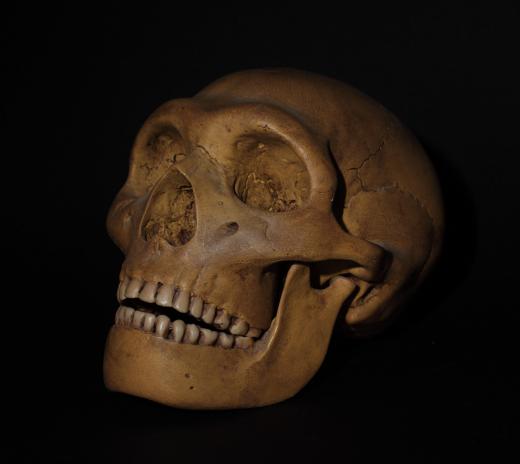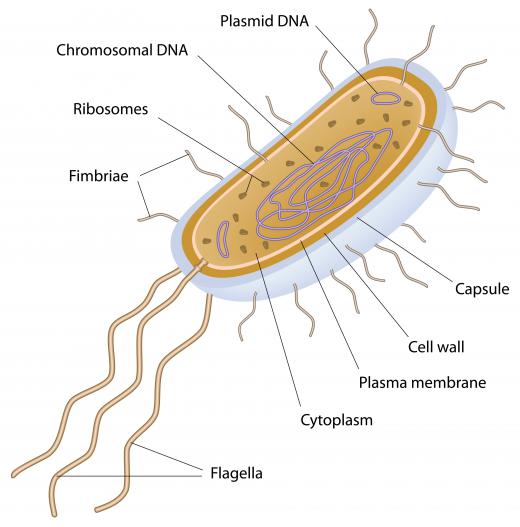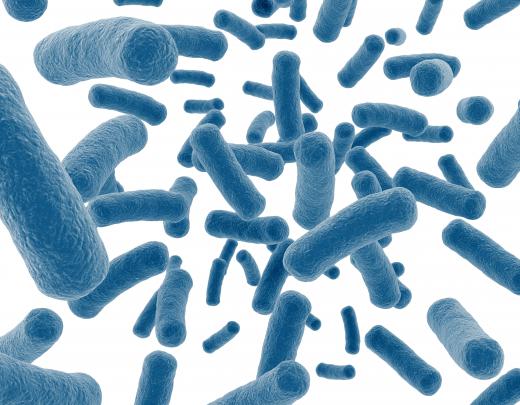In Biology, what is Scientific Classification?
 Michael Anissimov
Michael Anissimov
Scientific classification is the system used by biologists to classify all life on Earth. It is also known as scientific classification in biology or Linnean classification, after Carolus Linnaeus (1707-1778), who first attempted this huge project. The pioneering work was Systema Naturae, first published in 1735, which ran through twelve editions throughout Linnaeus' lifetime. The first version had a few thousand entries, grouped into taxa based on shared physical characteristics. Today, over two million species are recognized by science, though the total number of plant, animal, and unicellular species on Earth is estimated at between 10 and 100 million.
The system of scientific classification used in biology is hierarchical, with eight levels of categorization. Moving from smallest to largest, they are: species, genus, family, order, class, phylum, kingdom, and domain. Even more divisions are often added in between these levels, as life itself has no special obligation to be categorized naturally in just eight hierarchical levels. To give an example of each, consider the position of humans in scientific classification. Humans are species Homo sapiens, genus Homo, family Hominidae (the great apes), order Primates, class Mammalia (mammals), phylum Chordata (vertebrates and a few close relatives), kingdom Animalia (animals), domain Eukarya (eukaryotes, organisms with complex cells).

The highest levels of scientific classification have changed several times over the years. In 1735, Linnaeus introduced two kingdoms: Vegetabilia (plants and fungi) and Animalia. In 1866, the German biologist Ernst Haeckel introduced another kingdom, Protista, for all unicellular organisms. In 1937, French biologist Edouard Chatton divided in life into two "empires" -- Prokaryota and Eukaryota, based on more detailed observations of cells in plants, animals, and bacteria. It turned out that plants and animals had fundamental similarities in the complexity of their cells and the presence of cellular nuclei, whereas bacteria lack both nuclei and organelles (intracellular structures).

Several more major updates followed in the 50s, 60s, and 70s, which were a time of fast progress in biology. Herbert Copeland updated the system to four kingdoms in 1956, when he renamed Prokaryota to Monera and split Eukaryota into three kingdoms: Protista, Plantae, and Animalia. Another change came in 1969, when Robert Whittaker split Protista into Fungi and Protista, giving fungi their own top-level classification for the first time.

In 1977, Carl Woese and his collaborators introduced the most crowded top-level system yet, with six kingdoms: Eubacteria, Archaebacteria, Protista, Fungi, Plantae, and Animalia. Then, in 1990, the system was mercifully simplified by Woese, decreased to three domains: Bacteria, Archaea, and Eukarya. The latter is the current top-level classification system used.
AS FEATURED ON:
AS FEATURED ON:













Discussion Comments
I need help. What two levels of classifications do homo sapiens come from?
@titans62 - You know, it was the same case when I was in high school. We never learned about the domains even though they had been around for a long time before I took biology classes. When I got to college, though, all of the classes used domains (part of it may have been that Woese was a professor there). I think domains are widely accepted at this point, though. Maybe teachers are still stuck in the past when they were taking biology classes.
We have just started talking about all of these things in my biology class. For some reason, though, our teacher never mentioned domains. Why would that be? Maybe I will have to bring it up tomorrow.
One of the tricks she taught us for remembering the order of the levels is King Philip Came Over From Great Spain. I thought it was really helpful, since it is hard to remember seven categories.
@jcraig - There have been a lot of changes in taxonomy over the years. Obviously, the first groupings had to be based solely on observation. It may not seem like it at first, but once you really start to look at all the different parts of a plant or animal, you can find ways to separate them. A lot of it still comes down to the classifier. I have read a few books about people in Linnaeus's time, and some of the arguments were quite heated.
One of the problems with the old system of classification is that some species that are very distantly related can have similar traits based on location (think about spiny plants in the desert). That is when you really have to look at hundreds of characteristics at once and try to figure out how species have evolved and how they should be grouped.
Now that we have the ability to look at DNA and other molecular features, species classification been completely reformed.
What exactly is used to separate the different taxonomic levels? It seems like it would be very difficult to do. Maybe I am just not observant enough, but just thinking about cats and their relatives, how would you ever decide how to group lions against cheetahs against house cats?
It also seems like there have been a lot of changes in the upper levels groupings over the past 50 or 60 years. What causes people to change the biological classifications? I assume that they usually are met with a lot of controversy. Is there some sort of regulating committee that decides these things, or how do people get convinced to throw out the old system?
Post your comments